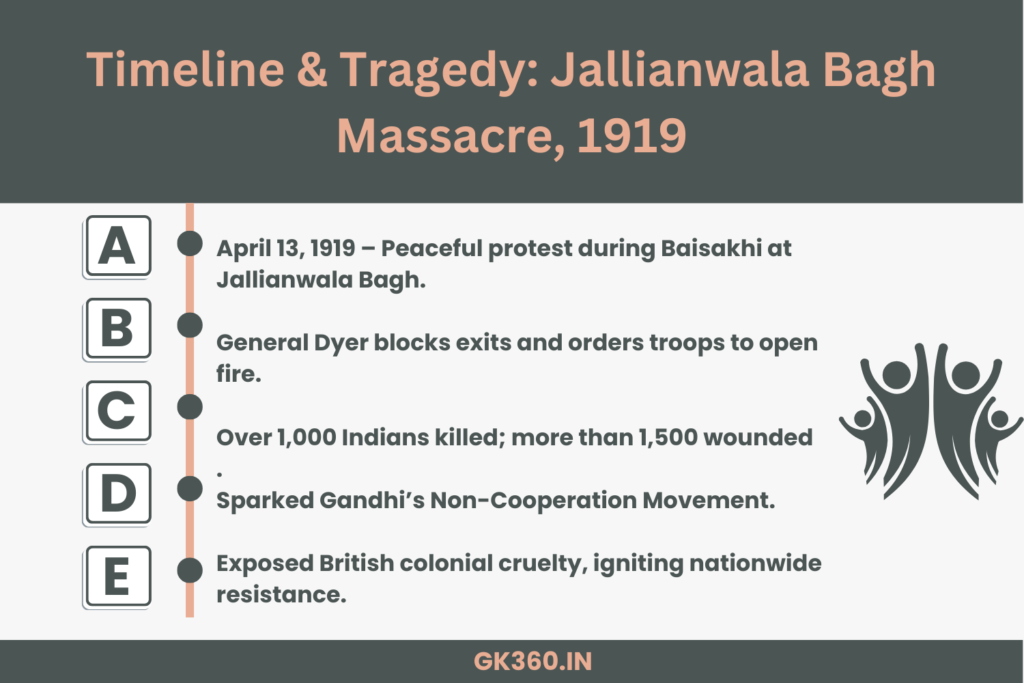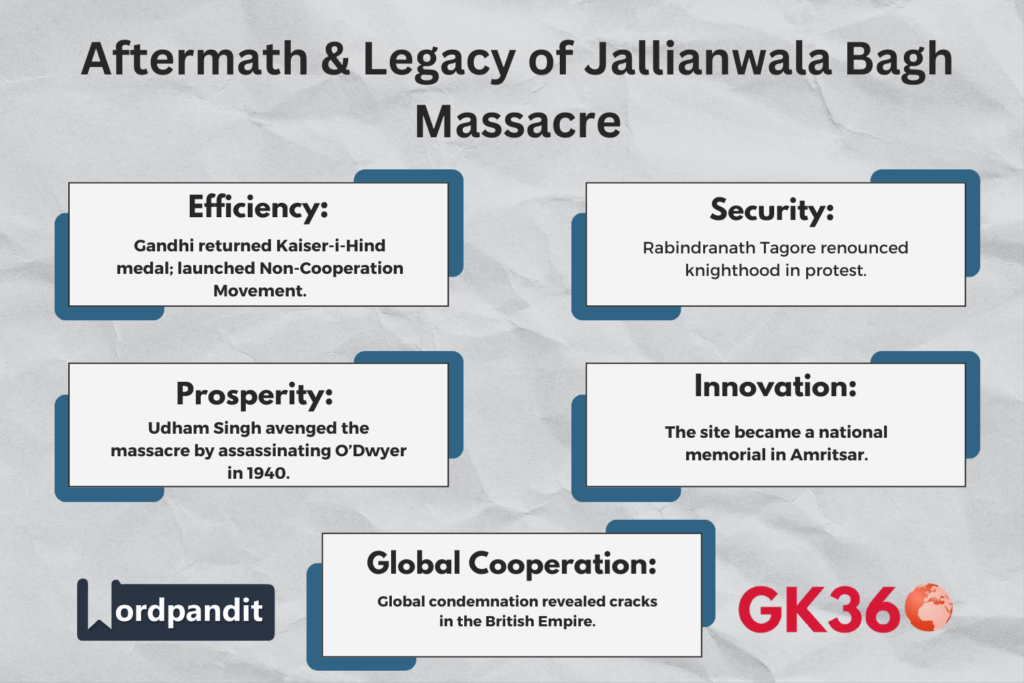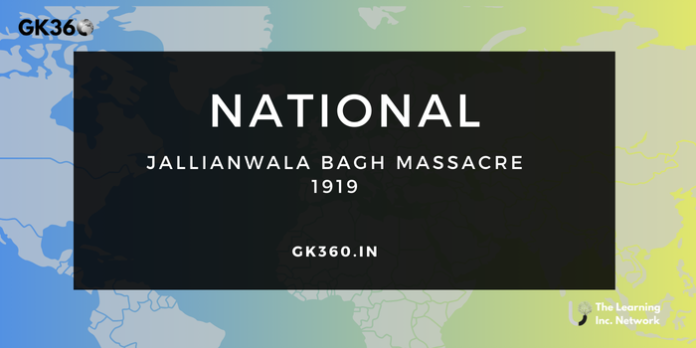Jallianwala Bagh Massacre 1919: A Defining Moment in India’s Fight for Independence
Introduction
The Jallianwala Bagh Massacre of 1919, also known as the Amritsar Massacre, remains one of the most horrifying and defining moments in India’s colonial history. On April 13, 1919, during the Baisakhi festival, thousands of unarmed civilians gathered at Jallianwala Bagh in Amritsar, Punjab, to peacefully protest against the Rowlatt Act and the arrest of nationalist leaders.
What followed was a ruthless act of violence orchestrated by General Reginald Dyer, who ordered his troops to fire indiscriminately into the crowd, sealing the exits to prevent escape. This brutal incident killed hundreds and wounded many more, forever altering the course of India’s independence movement.
The massacre not only exposed the oppressive nature of British colonial rule in India, but also unified Indians across regions and religions in their demand for complete freedom from British rule. It sparked global outrage, led to Gandhi’s Non-Cooperation Movement, and remains a powerful symbol of resistance and sacrifice.
Table of Contents
- What Led to the Jallianwala Bagh Massacre of 1919?
- The Arrests That Triggered the Amritsar Massacre
- How the Jallianwala Bagh Tragedy Unfolded
- Key Reasons Behind British Repression in Punjab
- Public Reaction to the Jallianwala Bagh Bloodshed
- Long-Term Effects on India’s Independence Movement
- Cultural and Political Responses
- Key Personalities Connected to the Massacre
- Jallianwala Bagh Today: Memorial and Legacy
- FAQs About the Jallianwala Bagh Massacre
- Conclusion: Why the Massacre Still Matters Today
- Key Takeaways Table
What Led to the Jallianwala Bagh Massacre of 1919?
The massacre occurred during a time of intense political unrest in British-ruled India. World War I had just ended, and instead of granting autonomy to Indians who had supported the British war effort, the colonial government introduced the Rowlatt Act—a repressive law that allowed arrest without trial.
The people of Punjab, especially in Amritsar, were furious. Protests began to erupt against the act, calling it a betrayal. Jallianwala Bagh, a walled public garden with a single narrow entrance, became the chosen spot for a peaceful assembly.
Unbeknownst to many, martial law had been imposed. The gathering, although peaceful, was seen by the authorities as an act of defiance.

The Arrests That Triggered the Amritsar Massacre
Tensions escalated rapidly following the arrest of two prominent Indian leaders, Dr. Saifuddin Kitchlew and Dr. Satya Pal, who were at the forefront of the anti-Rowlatt Act movement. Their detention enraged the local population, and peaceful protests turned into mass gatherings.
On April 13, 1919, during Baisakhi, thousands gathered at Jallianwala Bagh not only for religious celebration but also to voice their political discontent. Families, students, traders, and farmers alike had no idea that their assembly would end in bloodshed.
How the Jallianwala Bagh Tragedy Unfolded
General Reginald Dyer, without warning, led 50 soldiers into the garden. Upon arrival, he immediately ordered the only exit to be blocked and commanded his troops to open fire.
For the next 10–15 minutes, 1,650 rounds of ammunition were fired into the densely packed crowd. People scrambled for safety—some climbed walls, others jumped into a well, but escape was nearly impossible.
According to Indian sources, over 1,000 people were killed and more than 1,500 injured. British records, however, underreported the fatalities to downplay the scale of the atrocity.
The massacre shocked the nation, igniting fury and disbelief. It became a symbol of British cruelty, permanently altering the trajectory of India’s freedom struggle.
Key Reasons Behind British Repression in Punjab
Several deep-rooted causes led to the violent crackdown in Amritsar:
- 1. The Rowlatt Act (1919)
This infamous act allowed the British to detain individuals without trial—sparking national outrage. Known as the “Black Act”, it suspended civil liberties and silenced dissent, directly triggering the protests at Jallianwala Bagh. - 2. Declaration of Martial Law
To suppress growing unrest, the British imposed martial law in Punjab, restricting public gatherings and freedom of movement. Most civilians, especially rural attendees of Baisakhi, were unaware of these restrictions. - 3. Repression over Reform
Rather than engaging in dialogue, the British chose brute force. The massacre served as a warning against organized protest, reflecting the Empire’s deep fear of a united Indian front.
Public Reaction to the Jallianwala Bagh Bloodshed
Indian Response
Nationwide, the massacre ignited fury and unity. Leaders like Mahatma Gandhi and Motilal Nehru condemned the violence. Gandhi returned his Kaiser-i-Hind medal, signaling total disillusionment with the British.
The Indian National Congress (INC) launched an investigation, and public mourning turned into political mobilization. The idea of complete independence began to replace moderate calls for reform.
British Reaction
Back in Britain, reactions were mixed. While leaders like Winston Churchill condemned General Dyer’s actions as monstrous, others like Michael O’Dwyer defended them as necessary. The Hunter Commission was formed to investigate—but its findings led to no major consequences for Dyer, deepening Indian distrust.
Long-Term Effects on India’s Independence Movement
The Jallianwala Bagh Massacre was more than a tragic event—it marked a turning point in India’s political awakening.
- 1. Rise of the Non-Cooperation Movement
In 1920, Gandhi launched the Non-Cooperation Movement, encouraging Indians to boycott British goods, institutions, and honors. This was a direct response to the massacre and British inaction. - 2. End of Trust in British Rule
Even Indian moderates—who once believed in negotiating within the system—lost faith. The illusion of British justice was shattered. - 3. Global Condemnation
Human rights activists and world leaders voiced support for Indian grievances. The massacre embarrassed the Empire on the international stage.
Cultural and Political Responses
Rabindranath Tagore Returns His Knighthood
India’s Nobel laureate poet, Rabindranath Tagore, renounced his British knighthood as an act of protest. His famous letter described the massacre as a “brutal triumph of might over right.”
Sikh Community’s Gurdwara Reform Movement
The decision of some Sikh clergy to honor General Dyer sparked fury. This led to the Akali movement, aiming to bring religious leadership back under community control.
Legacy in Arts and Memory
From poetry and songs to murals and documentaries, Jallianwala Bagh remains an enduring symbol of colonial injustice. It has been immortalized in works like Shaheed Udham Singh’s story, who avenged the massacre by assassinating Michael O’Dwyer in 1940.

Key Personalities Connected to the Massacre
- General Reginald Dyer: Ordered the massacre; dubbed the “Butcher of Amritsar.”
- Michael O’Dwyer: Punjab’s Lieutenant Governor; supported Dyer’s decision.
- Mahatma Gandhi: Reacted with shock; initiated mass movements post-massacre.
- Rabindranath Tagore: Protested by renouncing knighthood.
- Udham Singh: Avenged the massacre in 1940, seen as a martyr and hero.
Jallianwala Bagh Today: Memorial and Legacy
Today, Jallianwala Bagh stands as a national memorial in Amritsar. Bullet-marked walls, a commemorative flame, and a museum tell the story of April 13, 1919.
It serves as:
- A place of remembrance for the victims
- A lesson in resilience and unity
- A reminder of the cost of freedom
FAQs About the Jallianwala Bagh Massacre
- What is the Jallianwala Bagh Massacre?
It was a mass killing of unarmed civilians by British troops on April 13, 1919, in Amritsar, Punjab. - Why did the massacre happen?
It was a response to peaceful protests against the Rowlatt Act and the arrest of Indian leaders, seen by the British as a threat to colonial authority. - How many people were killed in the massacre?
Indian estimates suggest over 1,000 people were killed, while British reports claimed around 379. - Who was General Dyer and what happened to him?
General Reginald Dyer led the massacre. He was censured by the British government but never faced serious punishment. - What was the impact of the Jallianwala Bagh Massacre on India’s freedom struggle?
It led to mass civil disobedience, loss of faith in British rule, and galvanized support for full independence.
Conclusion: Why the Massacre Still Matters Today
The Jallianwala Bagh Massacre was not merely a chapter in colonial history—it was a watershed moment that exposed the cruelty of British imperialism and awakened a collective consciousness among Indians demanding freedom, dignity, and justice.
On that fateful day in April 1919, bullets did not just take innocent lives—they shattered illusions. For decades, many Indian leaders had believed that political negotiation and incremental reform under British rule could secure autonomy. The massacre ended that belief. It made it clear that repression, not reform, was the true face of colonial governance.
This turning point in India’s freedom struggle marked the beginning of a deeper, more resolute phase of resistance. The trauma united Indians across region, religion, and class. It gave rise to mass civil disobedience movements, including the Non-Cooperation Movement and later the Quit India Movement, both of which drew directly from the anger and anguish born in Amritsar.
But the legacy of Jallianwala Bagh goes beyond political awakening. It has become an eternal symbol of sacrifice. Memorials, bullet-marked walls, and solemn ceremonies serve not only as tributes to those who perished but as powerful reminders of what is at stake when freedom is threatened.
In the global context, the massacre became a catalyst for anti-colonial discourse. Human rights advocates and political thinkers around the world condemned the brutality, compelling the British Empire to confront its growing global criticism.
Even today, over a century later, the story of Jallianwala Bagh holds relevance. In an era where civil liberties are often contested, the massacre teaches us about the importance of standing up against oppression—peacefully but persistently. It serves as a lesson in unity, resilience, and the high cost of freedom.
Key Takeaways Table
| Aspect | Details |
|---|---|
| Event Date | April 13, 1919 – during the Baisakhi festival. |
| Reason for Protest | Opposition to the Rowlatt Act and arrests of nationalist leaders. |
| Action by British Forces | General Dyer ordered troops to open fire on a peaceful crowd; over 1,000 killed. |
| Immediate Impact | Mass civil unrest and disillusionment with British rule; national outrage. |
| Political Response | Gandhi launched the Non-Cooperation Movement in 1920; INC mobilized protests. |
| Cultural & Symbolic Reactions | Rabindranath Tagore renounced knighthood; Udham Singh later assassinated O’Dwyer in retribution. |
| Memorial Today | Jallianwala Bagh is a preserved national memorial with bullet marks and a museum. |





